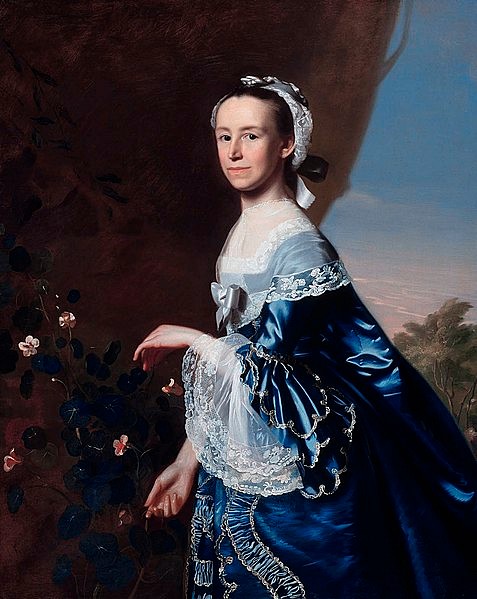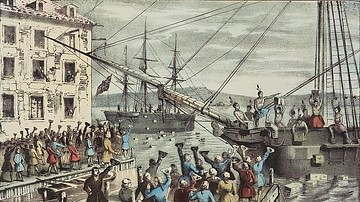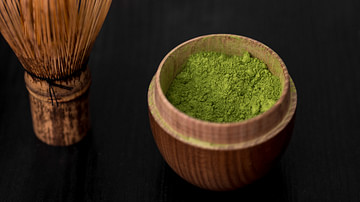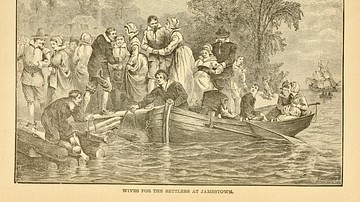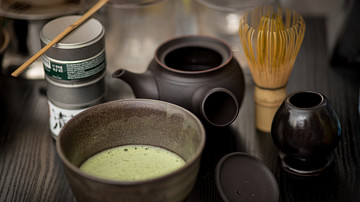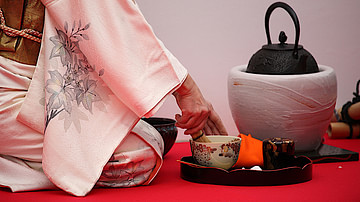In Colonial America, women were discouraged from taking an interest in politics and were instead expected to focus only on traditionally 'feminine' matters, such as homemaking and childrearing. However, such gender roles were challenged during the American Revolution (1765-1789), when women played a crucial role in achieving the independence of the United States.

From the very first signs of tension between the Thirteen Colonies and Great Britain, colonial women discovered their political voice. Women were the driving force behind boycotts of British imports, shunning British tea in favor of local herbal substitutes, and holding spinning bees to reduce dependence on British cloth. Female writers, such as Mercy Otis Warren and Phillis Wheatley, helped turn public opinion against British rule, while hundreds of women accompanied the Continental Army to perform essential duties like washing, nursing, and cooking; some women, like Margaret Corbin, Mary Ludwig Hays, and Deborah Sampson, even took up arms and fought against the British. Although women were not viewed as politically equal to men after the war, their involvement proved to be a vital first step in the long struggle for women's rights in the United States.
Role of Women in Colonial America
In October 1608, the 'second supply' of English settlers arrived at the Jamestown Colony of Virginia to supplement the population of original settlers. Among these new arrivals was Thomas Forrest, a gentleman financier, who was accompanied by his wife, a woman listed in the ship's manifest only as 'Mistress Forrest', and her maid, Anne Burras. Mistress Forrest and Anne Burras were the first two English women to settle in Jamestown; Burras would marry later that year and earn the additional distinction of becoming the first English woman to give birth in Virginia. English women continued to sporadically arrive in Jamestown over the course of the next decade until 1619 when the Virginia Company decided to send large groups of women to foster a self-sustaining population. In 1620, 90 single women, many of them from poor families, arrived in Virginia as the first of the so-called Jamestown brides, or 'tobacco brides'. They were married off to Jamestown's male settlers, each of whom paid the Virginia Company a dowry of 120-150 pounds of tobacco. Additional groups of Jamestown brides continued to arrive in the following years.
Faced with this growing population of women, the colonists of Jamestown implemented a gender hierarchy similar to that which existed in England. This revolved around the doctrine of coverture, which stipulated that once a woman was married, she was under the complete authority of her husband and no longer enjoyed an independent legal status. A married woman, or feme covert, was legally considered to be one with her husband; she could no longer own property or sign contracts, and any money she earned belonged to her husband. Once a woman married, she was usually confined to the role of homemaker, devoting her hours to cleaning, cooking, ironing, sewing, and gardening. Divorce was difficult to obtain and was often only permissible if a pre-existing condition rendered the initial marriage invalid. As a result, many colonial women felt anxiety about marriage, with one woman referring to marriage as a 'dark leap' from the familiarity of her parents' house into an unknown future controlled by a man whose personality she may have misjudged (Norton, 42). Still, married life was more desirable than remaining a single woman – or feme sole – for too long, as spinsters were often placed near the bottom of the social hierarchy.
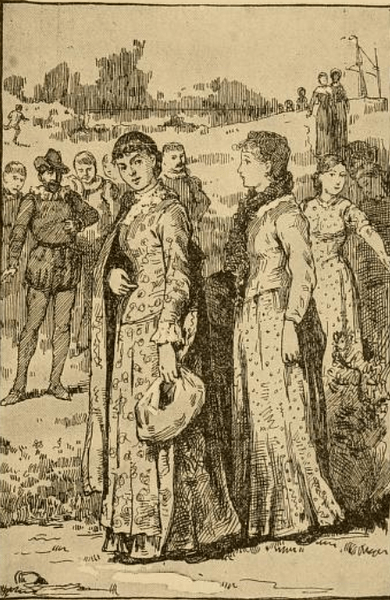
Of course, the status of colonial women varied from colony to colony, and widely depended on social class. Wealthy women, for instance, were usually better educated than lower-class women, as were women from Puritan New England who were often taught how to read in order to study the Bible. But, by and large, women were expected to remain within the 'feminine sphere' and to display only feminine traits such as modesty, cheerfulness, patience, and chastity. They were discouraged from expressing any interest in subjects that were considered masculine, particularly politics; attempts by colonial women to involve themselves in politics were met with punishment, as was the case with Anne Hutchinson, who was banished from Massachusetts in 1637 after challenging the authority of male religious leaders. But, as historian Mary Beth Norton points out, the advent of the American Revolution lent colonial women a political voice for the first time, helping to spark the slow progression of women's rights in the US.
Political Involvement of Women
In the 1760s, tensions between the Thirteen Colonies and Great Britain began to rise when Parliament passed a series of tax policies that many colonists condemned as unconstitutional. After protests against the Stamp Act (1765) and Townshend Acts (1767-68) turned riotous, Parliament dispatched soldiers to colonial cities such as Boston to restore royal authority, which only further escalated the conflict. Despite the notion of politics as an 'unwomanly' activity, letters and diary entries from the period prove that colonial women were just as invested in these political developments as the men; women were, after all, equally as affected by the Parliamentary taxes as the men and were just as outraged by the occupation of Boston by British soldiers. Many Patriot-aligned women threw off conventional gender norms to protest these policies. They marched alongside men in demonstrations, harassed Loyalists and tax officials, and seized goods from merchants who were believed to be hoarders.
Colonial women were also the driving force in the boycott of British goods. In response to the Tea Act of 1773, many women stopped purchasing tea imported by the British East India Company and refused to serve it to their husbands. Instead, they started to rely on local herbal teas and coffee. Women from all over Boston publicly swore to abstain from drinking British tea to "save this abused country from ruin and slavery" (Schiff, 178). On 25 October 1774, a group of 51 women met at the home of Elizabeth King in Edenton, North Carolina, to sign an agreement to boycott all British imports for the "publick good" (Norton, 161). This event, known as the Edenton Tea Party, was one of the first organized political actions undertaken by women in US history.

Another way women supported the boycott of British goods was to hold spinning bees. Since most clothing was made from British-imported cloth, Patriot women decided to reduce dependence on Britain by spinning cloth themselves. Spinning bees would begin early in the morning, with a group of 20 to 40 women gathering at the home of their local minister (some groups were as large as 100). They would spend the day spinning cloth while discussing politics or engaging in friendly competition with one another. Then, at nightfall, they would disperse after a relevant sermon from the minister.
Many such spinning bees were organized by the Daughters of Liberty, a group of politically active women that had been founded in Boston in 1766. Alongside popularizing the boycotts, the Daughters of Liberty was also hands-on in political protests; one of the group's founding members, Sarah Bradlee Fulton, came up with the idea of disguising the Sons of Liberty as Mohawks during the Boston Tea Party to conceal their identities from British officials. After the 342 crates of tea had been dumped into Boston Harbor, Fulton hid some of the perpetrators in her home and removed their face paint. For this, she has been referred to as the 'Mother of the Boston Tea Party'.
While Fulton was on the front lines of Patriotic protest, other women fanned the revolutionary flames with pen and paper. Mercy Otis Warren, for instance, was a New England playwright who wrote multiple satires lambasting the Loyalists and encouraging the Patriots. Another example was Phillis Wheatley, an African woman who was enslaved in Boston, who wrote multiple poems celebrating the American Revolution as well as its leaders. The works of Warren and Wheatley were immensely popular and helped shift public opinion in favor of the Patriots.
Despite the usual rigidity of gender roles in Colonial America, male revolutionary leaders encouraged female involvement, as the issue was considered too important to count women out. Pamphlets and broadsides encouraged women to continue boycotting British goods, with Samuel Adams even stating, "with ladies on our side, we can make every Tory tremble" (battlefields.org).
Women & the War
As war with Britain loomed on the horizon, Patriot women helped prepare for combat. In September 1774, Massachusetts women worked to make food and gather supplies for men in the militias; one observer remembered seeing, "women and children making cartridges, running bullets…[while] crying and bemoaning and at the same time animating their husbands and sons to fight for their liberties, tho' not knowing whether they should ever see them again" (quoted in Norton, 167). Many women were just as eager for war as the men; the Baroness de Riedesel, wife of a Hessian general, recorded in her diary that she heard an American girl exclaim: "Oh, if I only had the king of England here, with what satisfaction I could cut his body in pieces, tear out his heart, dissect it, put it upon these coals, and consume it" (Middlekauff, 551). The violence and blatant politicalness of the girl's statement shocked the German baroness.
When the war finally came in April 1775, many women took to accompanying the Continental Army. Most 18th-century armies traveled with women, known as 'camp followers', who would perform essential duties as washerwomen, seamstresses, nurses, and cooks. These camp followers had to put up with the conditions of life in the army camp, which were often miserable, and they had to endure the scorn of the American officers, many of whom viewed them as little more than nuisances. But there were several reasons why women might choose to become camp followers, despite these hardships. Some were driven by a sense of patriotism or by a love for their husbands and sons, whom they were loath to part from. Others were unable to support themselves and chose to accompany the army rather than risk starvation and poverty. Some women, like Martha Washington, did not stay with the army all the time but periodically visited to support their husbands during winter encampments.
Though women were considered non-combatants, several Patriot women wound up bearing arms against the British. Margaret Corbin, for example, accompanied the Continental Army as the wife of an artilleryman, John Corbin. When John was killed at the Battle of Fort Washington (16 November 1776), Margaret took his place and continued to fire his cannon until she was incapacitated by several wounds. She survived the battle and would go on to become the first woman to receive a US military pension. Two years later, Mary Ludwig Hays was serving as a water carrier during the scorching hot Battle of Monmouth (28 June 1778), running back and forth to deliver water to dehydrated soldiers. When her husband, also an artilleryman, passed out from heat exhaustion, Hays did not hesitate to take his place, firing his cannon for the remainder of the battle. The folkloric character of 'Molly Pitcher' is thought to be a composite of both Corbin and Hays.
Another woman who fought in the war was Deborah Sampson, who disguised herself as a male and enlisted in the Continental Army in 1782 under the alias of Robert Shurtleff. Sampson was wounded in the thigh during a skirmish with Loyalists in Westchester County, New York; fearful that the army surgeons would discover her identity, she slipped out of the field hospital and removed the bullet herself, using a penknife and sewing needle. The next summer, however, she came down with a fever and a physician discovered her gender while treating her. Sampson was honorably discharged and went on to marry a farmer. In 1805, Congress awarded her a monthly pension for her service.
Not all Patriot women who aided the war effort were part of the Continental Army. Sybil Ludington, for instance, was a 16-year-old girl from New York, who, on 26 April 1777, discovered that the British were launching a raid on Danbury, Connecticut, where a stockpile of weapons was stored. Ludington leaped atop her horse and, despite a heavy rainstorm, rode 40 miles (64 km) through New York's Putnam and Dutchess counties to alert the militia. Thanks to her efforts, the Patriot militia was able to drive the British back the next day at the Battle of Ridgefield. Though elements of Ludington's story have been questioned by historians, she is celebrated in American folklore as a female Paul Revere.
Women Behind the Lines
While several women supported the war as camp followers, the vast majority remained behind the front lines as civilians. Nevertheless, many civilian women supported the war effort in any way they could. In 1780, Esther de Berdt Reed, wife of the governor of Philadelphia, organized a female-run fundraiser that raised over $300,000 for the Continental Army. Additionally, the spinning bees persisted throughout the war, with women shifting their focus to making shirts and uniforms for soldiers. With their husbands gone, Patriot women in several towns took to enforcing the law, exposing and punishing those who had violated boycott agreements. But most civilian women were preoccupied with running their husbands' estates and managing their affairs while the men were off at war. This granted middle- and upper-class women a kind of freedom that, prior to the revolution, they could only dream of. Their husbands were often too preoccupied with their military or political work to dictate orders to their wives, leaving the women with much autonomy in regard to their homes and family finances.
But, of course, civilian women were not spared from the destructiveness of the war. Those who owned homes in cities that were occupied by the British army – such as New York and Philadelphia – found themselves obliged to provide quarters for British and Hessian officers. While some officers were polite to their American benefactors, others were troublesome and rowdy; on several occasions, British and Hessian soldiers entered homes uninvited and took whatever they wanted (this behavior was not limited to the British soldiers and their allies, of course). As in many conflicts, sexual assault was utilized as a horrific weapon of war. After their inability to catch Washington's army in the New York and New Jersey Campaign, some British soldiers vented their frustrations by sexually assaulting American women in British-occupied New York City. Lord Francis Rawdon, a young British officer, expressed the frequency of such assaults in a letter, writing that "a girl cannot step into the bushes to pluck a rose without running the most imminent risk of being ravished…and of consequence we have most entertaining courts-martial every day" (McCullough, 142).
Despite Lord Rawdon's distasteful attitude, the British courts-martial took acts of sexual violence more seriously and dispensed severe punishments for soldiers who were convicted. Civilian women also ran the risk of becoming collateral damage if they did not evacuate their homes during a battle. As the Battle of Connecticut Farms (7 June 1780) raged outside, Hannah Caldwell, the wife of the town's reverend, took shelter in her home with her children. But a stray bullet crashed through the window, killing Caldwell in front of her daughter. Civilian women, therefore, were just as affected by the war as the camp followers.
Conclusion
On 31 March 1776, Abigail Smith Adams wrote a letter to her husband, John Adams, who was serving as a delegate to the Second Continental Congress in Philadelphia:
I desire you would Remember the Ladies and be more generous and favourable to them than your ancestors. Do not put such unlimited power into the hands of the Husbands. Remember all Men would be tyrants if they could. If particular care and attention is not paid to the Ladies we are determined to foment a Rebellion and will not ourselves bound by any Laws in which we have no voice, or Representation (Adams Family Papers).
These words from a future First Lady show just how much the political voice of American women had developed during the tumultuous years of revolution. Having been largely barred from political involvement since the founding of Jamestown, women suddenly found themselves thrust to the forefront of a revolutionary movement. Just like the men, women fought, bled, and died for the cause of American liberty. In the postwar United States, women were given slightly more freedoms than they had had prior to it; for instance, the need to raise virtuous citizens of a republic meant that women were more likely to receive some degree of education so that they could instruct the next generation of Americans. In New Jersey, women were also temporarily granted the right to vote, thanks to the vague wording in the state constitution; a law passed in 1807, however, ended women's right to vote in that state, and it would be many decades before women in the US recovered their suffrage.
Although Abigail Adams' pleas to 'remember the ladies' largely went unheeded, the American Revolution was still an important first step in the women's rights movement in the United States. It gave American women a political voice, however limited and temporary, and lit the spark that would influence the fight for women's rights in the following centuries.

